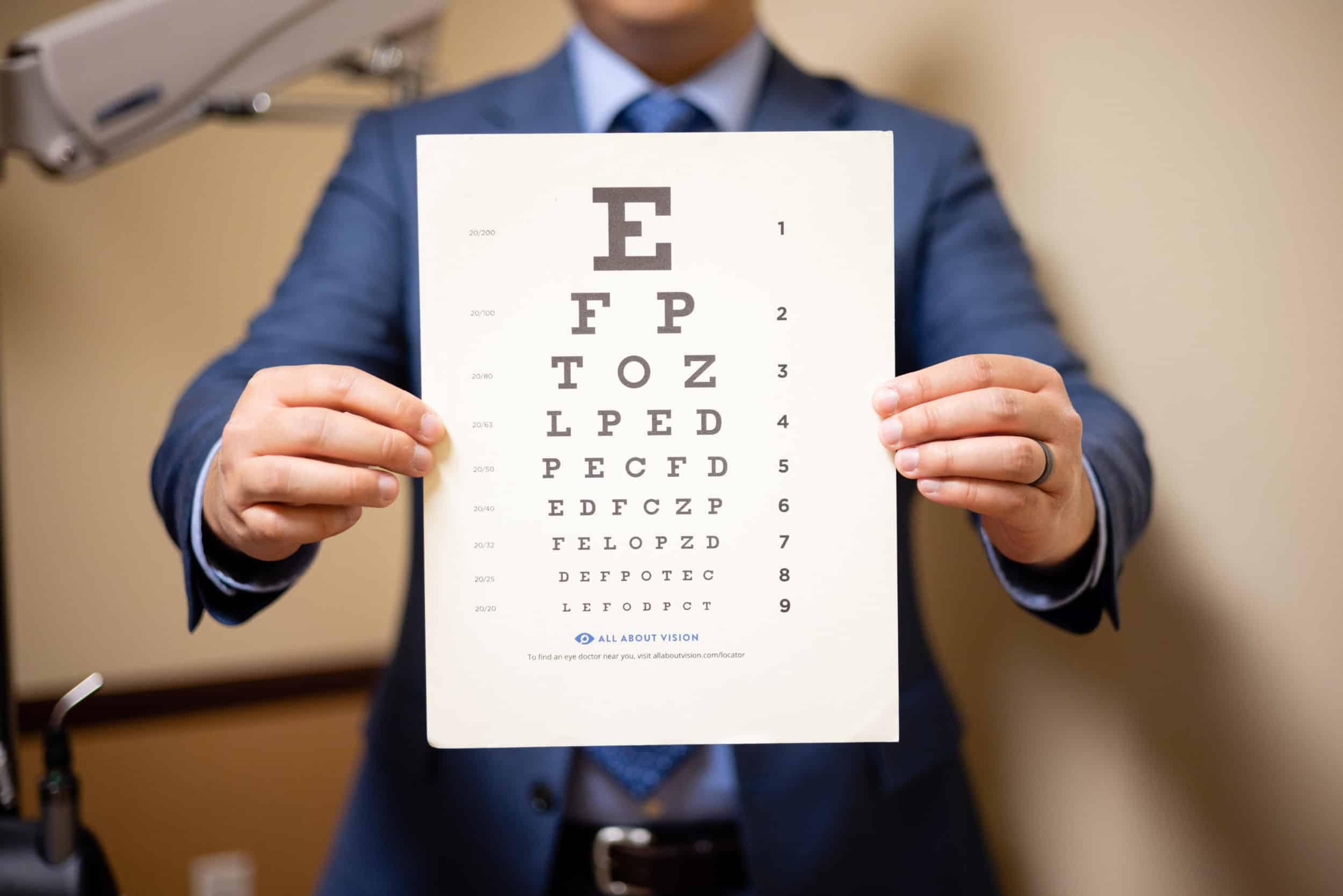Regular eye exams are an invaluable tool in maintaining eye health by detecting and preventing disease. Some diseases, such as glaucoma, develop gradually without causing pain or vision loss, so patients may not notice that anything is wrong until significant and irreversible damage has been done. Early detection of eye diseases can allow for a choice of treatment options and reduced risk of permanent damage.
What Happens During An Eye Exam?
An eye exam is different from a vision screening, which only tests vision and is commonly performed by a school nurse, pediatrician or other health care provider. Only your eye doctor can perform a comprehensive eye exam to evaluate the overall health of the eye and detect any changes that may indicate a vision disorder. During a routine eye exam, your doctor will evaluate your eyes for refractive errors, as well as common conditions such as:
- Amblyopia (Lazy Eye)
- Strabismus (Crossed Eyes)
- Presbyopia (Age Related Farsightedness)
- Glaucoma
- Diabetic eye disease
This is done through a series of eye tests that examine all aspects of the eye, including a visual field test, dilation, glaucoma test, slit-lamp examination, cover test, retinoscopy and refraction. These tests can all be performed in your doctor’s office and are safe for all patients.
After completing the comprehensive exam and coming to an accurate diagnosis, your doctor will develop a treatment plan based on the findings of the exam. This treatment plan usually includes a prescription for eyeglasses or contact lenses, medication, vision therapy, eye vitamins, vision supplements or surgery for serious conditions.
Refraction
A refraction can be given as part of a routine or comprehensive eye examination by an eye care professional. It may also be called a vision test. This test, not only tells your eye doctor exactly what prescription you would need in your glasses or contact lenses, but also can be used as a diagnostic tool for detecting certain corneal conditions.

An ideal vision is considered to be 20/20 vision, those that can read letters that are 3/8 of an inch tall from 20 feet away.
If you don’t have 20/20 vision, you have what is called a refractive error. A refractive error is caused when light does not bend properly as it passes through the lens in your eye. By performing a refraction test we are able to find a prescription lens that will allow you to have 20/20 vision.
Corneal Transplantation
An improperly curved cornea may be corrected surgically or non-invasively to reduce or eliminate the need for eyeglasses or contact lenses. A thorough eye examination and consultation are necessary before a treatment decision can be made.
Transplantation involves replacing the damaged cornea with a healthy one from a donor (usually through an eye bank). Keratoplasty is a low-risk procedure – it is the most common type of transplant surgery and has the highest success rate.
During the procedure, a circular incision is made in the cornea. A disc of tissue is removed and replaced with healthy tissue; these discs may be thin (lamellar keratoplasty) or as deep as the entire cornea (penetrating keratoplasty, the technique used in almost all corneal transplants). Local or general anesthesia may be used. The entire procedure lasts only 30-90 minutes.


